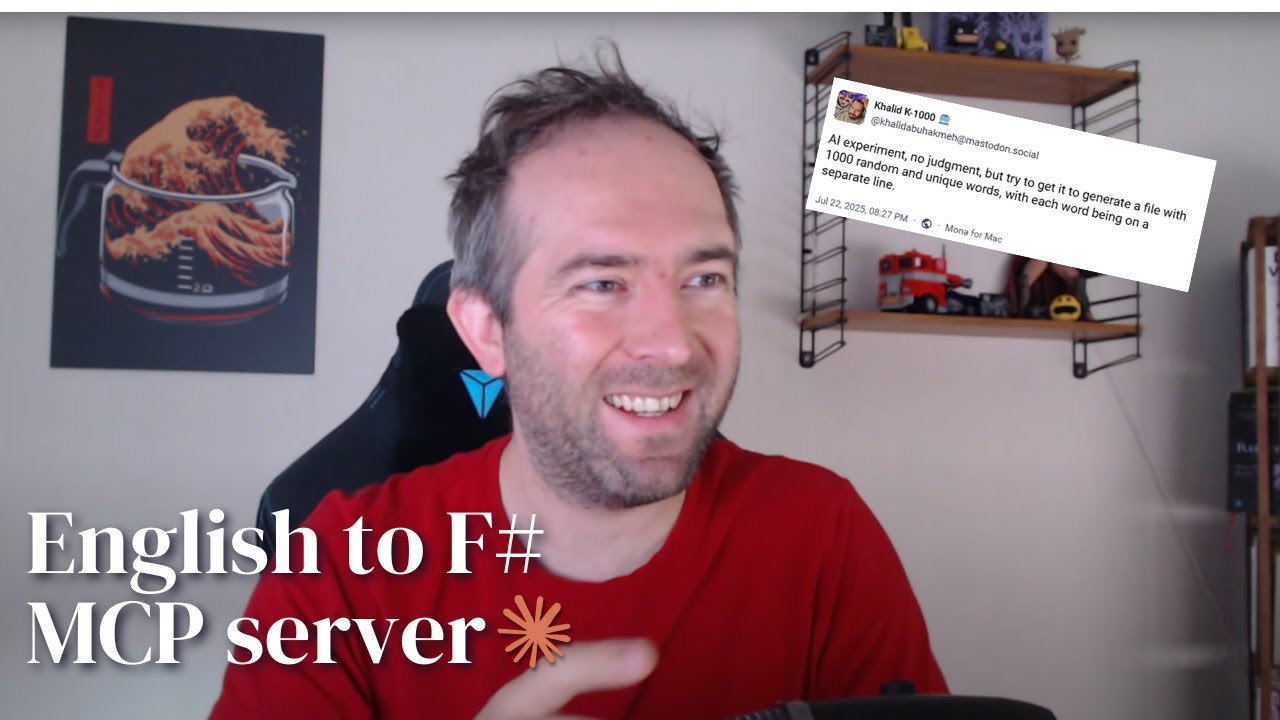The video demonstrates how combining an AI language model with F# programming and an interactive code execution environment enables the generation of a file containing 1,000 unique, real dictionary words—overcoming the limitations of AI alone in precise tasks. While this approach showcases enhanced AI capabilities through external tool integration, the speaker also highlights the associated security risks and the need for cautious development.
In the video, the speaker begins by referencing a tweet from Khaled that challenges AI language models to generate a file containing 1,000 random and unique words, each on a separate line. The speaker acknowledges the difficulty of this task for large language models (LLMs) when no external tools are provided, as they tend to make mistakes in such precise generation tasks. To address this, the speaker introduces their own experiment using the F# programming language combined with Claude Code and an MCP server setup, which allows the AI to generate and execute F# code interactively.
The speaker demonstrates their system, called the FSI client, which acts like an interpreter that understands English prompts and translates them into executable F# code. This setup enables the AI to programmatically generate the requested file. Initially, the AI attempts to create random words by combining vowels and consonants, resulting in nonsensical strings rather than actual dictionary words. Recognizing this limitation, the speaker refines the prompt to instruct the AI to use real words by accessing dictionary files available on GitHub, commonly used in security and password cracking contexts.
The AI then attempts to download a dictionary file from GitHub to source authentic words. However, the speaker encounters some technical issues with their setup, causing errors during the code execution. Despite these hiccups, the system manages to complete the task and produce a file named “randomwords.txt” containing 1,000 words. The speaker inspects the file and confirms that the words are indeed drawn from a real dictionary, shuffled, and selected to meet the uniqueness requirement, demonstrating the effectiveness of combining LLMs with external tools.
The speaker reflects on the broader implications of this experiment, noting that while LLMs alone struggle with such precise tasks, augmenting them with external programming capabilities and access to online resources can significantly enhance their functionality. However, this approach also introduces security risks, as allowing AI models to execute code and download files autonomously could be dangerous if not properly controlled. The speaker emphasizes that this is a work in progress but finds the experiment both fun and insightful.
In conclusion, the video showcases an innovative method of leveraging F# programming and an interactive AI client to overcome limitations of language models in generating complex outputs. By integrating code execution and external data retrieval, the speaker demonstrates a powerful, albeit risky, way to extend AI capabilities. The experiment highlights both the potential and the challenges of combining AI with programming tools, inviting further exploration and caution in this emerging area.
